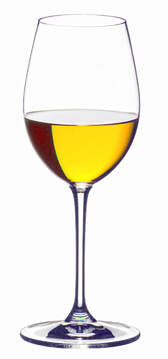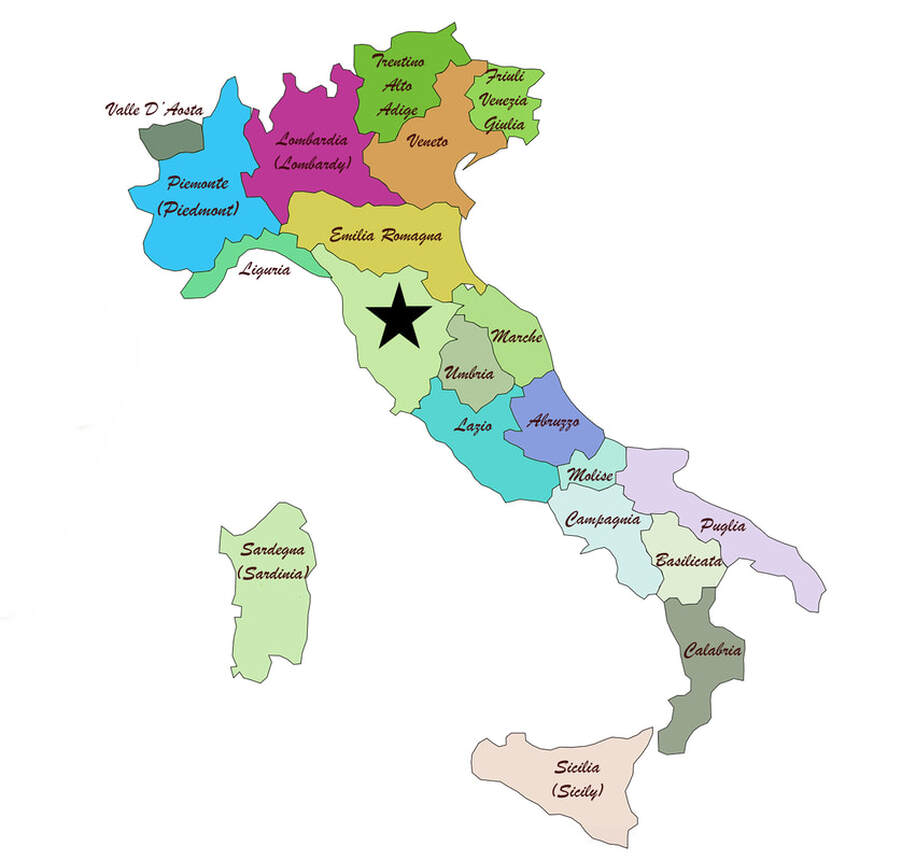
Region: Toscana/Tuscany
Quality Level in EU/Italian Wine Law: DOC/DOCG
Established: 1984 Classico; DOCG in 1996; Multiple subregions
Primary Grape Varieties: Various DOC rules cover between 70-75% Malvasia or Trebbiano with the remaining from other approved local grapes. Sangiovese versions require 50% with the other from approved grapes of either color.
Pairs with: Desserts, pastries, herbal cheeses.
Characteristics: Golden and deep in color. Aromas and flavors of dried mushrooms, walnuts, honey, vanilla and dates.
Serve: Highly chilled
Vin Santo is the most famous dessert wine in Tuscany. It is a strong style of wine made from dried grapes. The grapes are dried until they consolidate the acidity and sugars while shriveling substantially by losing much of the water content. The Passito wine is made from fermenting these grapes with a very slow fermentation that lasts for several years in small, sealed and wooden barrels.
The wine can become dry if the fermentation is allowed to continue and the wine will always result in elevated alcohol and intensity. Vin Santo has a traditional pairing partner with local biscuits or cookies that are used to dip in the beverage or just eat along.
Vin Santo is made all over Italy but it is best known in Tuscany where a majority of the DOC regions allow a passito wine even if they are not officially called Vin Santo. They are typically a blend of multiple grapes with Trebbiano being the most common contributor along with Malvasia. Vin Santo made from red grapes such as Sangiovese are called Occhio di Pernice. This name derives from the red eyes of a partridge and is considered a rosato version of the wine style. The name actually means "Eye of the Partridge".
An example of a Vin Santo DOC is the Vin Santo di Carmignano DOC that bases their wines on Trebbiano and Malvasia grapes that are dried for 4-6 months and can range from sweet to dry after at least 3 years of aging. Reserve versions must be aged at least 4 years. Their red Occhio version has the same aging requirements.
Quality Level in EU/Italian Wine Law: DOC/DOCG
Established: 1984 Classico; DOCG in 1996; Multiple subregions
Primary Grape Varieties: Various DOC rules cover between 70-75% Malvasia or Trebbiano with the remaining from other approved local grapes. Sangiovese versions require 50% with the other from approved grapes of either color.
Pairs with: Desserts, pastries, herbal cheeses.
Characteristics: Golden and deep in color. Aromas and flavors of dried mushrooms, walnuts, honey, vanilla and dates.
Serve: Highly chilled
Vin Santo is the most famous dessert wine in Tuscany. It is a strong style of wine made from dried grapes. The grapes are dried until they consolidate the acidity and sugars while shriveling substantially by losing much of the water content. The Passito wine is made from fermenting these grapes with a very slow fermentation that lasts for several years in small, sealed and wooden barrels.
The wine can become dry if the fermentation is allowed to continue and the wine will always result in elevated alcohol and intensity. Vin Santo has a traditional pairing partner with local biscuits or cookies that are used to dip in the beverage or just eat along.
Vin Santo is made all over Italy but it is best known in Tuscany where a majority of the DOC regions allow a passito wine even if they are not officially called Vin Santo. They are typically a blend of multiple grapes with Trebbiano being the most common contributor along with Malvasia. Vin Santo made from red grapes such as Sangiovese are called Occhio di Pernice. This name derives from the red eyes of a partridge and is considered a rosato version of the wine style. The name actually means "Eye of the Partridge".
An example of a Vin Santo DOC is the Vin Santo di Carmignano DOC that bases their wines on Trebbiano and Malvasia grapes that are dried for 4-6 months and can range from sweet to dry after at least 3 years of aging. Reserve versions must be aged at least 4 years. Their red Occhio version has the same aging requirements.
Producer/Theme websites:
